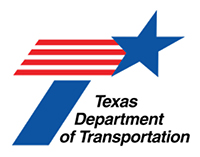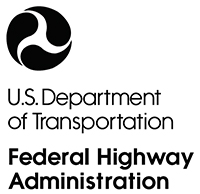Using Safety Contingency Funding to Address Unforeseen Safety Needs During Construction in Texas — Factsheet
Printable version [PDF 709 KB]
You may need the Adobe® Reader® to view the PDFs on this page.
Contact Information: Operations Feedback at OperationsFeedback@dot.gov

U.S. Department of Transportation
Federal Highway Administration
Office of Operations
1200 New Jersey Avenue, SE
Washington, DC 20590
ops.fhwa.dot.gov
December 2019
FHWA-HOP-20-009
The Challenge
Change orders are a mechanism used to address unforeseen conditions that arise during construction. Unfortunately, when unexpected traffic safety concerns are identified during the project, the time required for processing and approving a change order may impede efforts to address the safety problems quickly and efficiently.
A Solution – Creating a Safety Contingency Funding Mechanism Within the Contract
To address these challenges, the Texas Department of Transportation (TxDOT) Construction Division has instructed project engineers to incorporate a "Safety Allowance" force account line item (approximately 2–5 percent of the total project estimate is suggested) into their project estimates, with the following considerations:
The individual Districts decide the amount to include for each project;
Smaller projects may be higher than 5 percent and larger projects may be lower than 2 percent as deemed necessary; and
This force account item is not mandatory, but if not used, the District will need to be able to provide a reason for not including it in the estimate.
Contractually, the funds are handled through a General Note supplementing the standard specification for Barricades, Signs, and Traffic Handling (Item 502):
The Contractor Force Account "Safety Contingency" that has been established for this project is intended to be utilized for work zone enhancements, to improve the effectiveness of the Traffic Control Plan, that could not be foreseen in the project planning and design stage. These enhancements will be mutually agreed upon by the Engineer and the Contractor's responsible person based on weekly or more frequent traffic management reviews of the project. The Engineer may choose to use existing bid items if they do not slow the implementation of the enhancement.

Figure 1. Flexibility in addressing unforeseen conditions in work zones is often needed to improve safety.
(Source: Texas A&M Transportation Institute)

Figure 2. Safety contingency funds have been used for many countermeasures, such as for work zone intelligent transportation systems.
(Source: Texas A&M Transportation Institute)
Use of the Safety Contingency Funds
Beginning in 2013, utilization of the safety contingency funds has grown each year as project engineers and contractors have become more comfortable with their availability. In fiscal year 2019, the Department used over $17 million in safety contingency funds on over 500 projects statewide.
Amount Paid Under Safety Contingency Line Item
The funds have been used for a wide range of traditional and innovative safety countermeasures, including:
Repair of potholes, in the existing travel lanes, created by increased heavy construction vehicle traffic hauling materials to and from the workspace;
Deployment of additional portable changeable message signs to provide advance warning about queues greater than estimated during temporary traffic control design;
Hiring off-duty police officers to assist with traffic control at signals where high volumes of truck traffic are using the roadway; and
Implementation of work zone intelligent transportation system (ITS) technology to warn drivers when construction vehicles are exiting the workspace and merging into the traffic stream.
The safety contingency funds are also effective as a temporary way to keep project activities moving while waiting for execution of other safety-related change orders. In one instance, a decision was made to change the final pavement markings from profile markings to thermoplastic markings. To avoid delay in project progress that would increase the number of days of work zone exposure, the safety contingency fund was used to complete the marking work until the change order was executed and the funding pay items could be corrected.
Conclusion
Unforeseen needs often arise during the construction phase of a project. These needs may result in expensive and time-intensive change orders. By developing a safety contingency line item as part of the project estimate phase, TxDOT can address and mitigate numerous challenges during active operations. As a result, the State has seen a significant positive impact in its ability to address infrastructure and roadside safety concerns in and around its work zones.
"It is critical to act quickly where we see opportunities to enhance safety for drivers and for TxDOT and contractor employees. Establishing a safety allowance force account line item on our projects allows us to do that."
– Gina E. Gallegos, P.E., Director
TxDOT Construction Division
For More Information
FHWA
Jawad Paracha
Jawad.Paracha@dot.gov
(202) 366-4628
TxDOT
Gina E. Gallegos, P.E.
Gina.Gallegos@txdot.gov
(512) 416-2500


